Photographs: Reuters Sudheer Pal Singh
The story of the Indian Railways has always been wrapped in mind-boggling numbers.
At 64,000 km, it runs the largest rail network in Asia and is the world's largest commercial employer.
The current financial year, however, has seen it face new financial challenges, largely because of the burden of Sixth Pay Commission recommendations for a pay rise for its employees and loss of freight traffic revenue.
In an interview with Business Standard, days before the announcement of the Railway Budget for 2011-12, Financial Commissioner Samar Jha hopes that the railways would tide over the crisis soon, as the impact of the Sixth Pay Commission recomendations dissipates and earnings improve. Edited excerpts:
Can you tell us the truth behind the recent media reports on the alleged financial breakdown of Indian Railways?
The "bankruptcy" word is being used against us. This is incorrect because it gives the impression that the Indian Railways is not able to repay debt.
. . .
Indian Railways is NOT bankrupt: Railway official
Photographs: Reuters
After the Sixth Pay Commission, our payments were 55 per cent more than the base year of 2007-08 in the first year, 105 per cent more in the second year and 97 per cent more in the current year.
The annual recurring impact of this is around Rs 15,000 crore (Rs 150 billion). We are the only ministry paying our employees from our internal generation.
No other government department has issues about paying Pay Commission arrears because the finance ministry pays it.
We have around 1.4 million employees and 1.2 million pensioners. The overall impact of the Pay Commission recommendations has been assessed at Rs 55,000 crore (Rs 550 billion), inclusive of pensions for the first three years up to March 2011.
. . .
Indian Railways is NOT bankrupt: Railway official
Image: Railway Minister Mamata Banerjee.Photographs: Reuters
The media fails to recognise that this is the surplus we could have generated if the Sixth Pay Commission recommendations had not come. Although this is not an argument, because we are pleased that the salaries have been increased.
Despite this, we have not defaulted on payments to the Indian Railways Finance Corporation which is quite hefty. Also, there has been no deferment on our dividend liabilities after the Sixth Pay Commission.
We have not defaulted on staff payments, too. Although there are some payments of small contractors not having been made and have been highlighted in news reports, it is for a specific reason.
For many years, the railways' ability to execute projects was at question. But now we have got our act together. Contracts are in place.
. . .
Indian Railways is NOT bankrupt: Railway official
Photographs: Reuters
And contractors do not like to sit down and wait. They go ahead with the projects even though we ask them to go slow, saying we are in a bit of money trouble.
Once the work gets done, the bill gets produced. This is a small sum but we are not paying it, as currently there is a gap between our target and actual revenue earnings.
But are not your earnings during the current financial year, too, way behind the targeted Rs 92,000 crore (Rs 920 billion) in both freight and passenger segments?
There is a shortfall of around Rs 3,000 crore (Rs 30 billion) in our earnings in the current year. We have lost 13.8 million tonnes of iron ore loading for export up to December in Orissa and Karnataka.
We have lost Rs 2,600 crore (Rs 26 billion) due to this, considering a yield per million tonne of Rs 180 crore (Rs 1.80 billion).
. . .
Indian Railways is NOT bankrupt: Railway official
Photographs: Reuters
Also, increases in diesel prices twice have added Rs 1,000 crore (Rs 10 billion) to our fuel bill in the current financial year.
While we are weathering all of this, our earnings have been also hit due to regulation of traffic in the Naxalite areas and the Gujjar agitation. This has led to an estimated Rs 1,500-crore (Rs 15 billion) loss, as we had to cancel hundreds of passenger trains.
In the absence of these losses and the losses due to a shortfall in iron ore loading, we would have shown traffic growth of 14 per cent over last year.
But I am sure we will be able to meet the target for traffic earnings. In fact, we might be able to exceed it, as traffic has started booming in January.
. . .
Indian Railways is NOT bankrupt: Railway official
Photographs: Reuters
How has the fund balance been in the past few years and what is the current position?
After the Fourth Pay Commission, the fund balances had become so low that we had to go to the government seeking a loan, in 1988.
Balances were nil in the Capital Fund and Development Fund. Even after the Fifth Pay Commission, the balance in the Development Fund was nil, though there was some amount in the Capital Fund.
We had a fund balance of Rs 19,700 crore (Rs 197 billion) in 2007-08. In 2008-09, it became 13,000 crore (Rs 130 billion), as we had to pull out Rs 6,000 crore (Rs 60 billion) for payment of arrears.
In 2009-10, we paid 60 per cent of the arrears and also the dividend. So, the balance became virtually nil. In the current financial year, we have projected that the fund balances will again start building up.
. . .
Indian Railways is NOT bankrupt: Railway official
Photographs: Reuters
We had pulled out money from our pockets for the Pay Commission arrears. These funds come out of our internal generation.
So, the actual stress is appearing in the deteriorating fund balance and the operating ratio (OR, the money spent to earn a sum of Rs 100).
Is it correct that your OR has reached around 95 per cent currently, as against 92 per cent anticipated in the last Budget?
There is nothing called an OR mid-year. We do not have monthly figures. But on a pro-rata basis, it must be around 96 per cent at present.
At the end of the year, we should be able to reach our budgeted OR figure. Although we might miss it by 0.5 or 1 per cent, depending on the extent to which we can control our expenditure.
. . .
Indian Railways is NOT bankrupt: Railway official
Photographs: Reuters
The process for calculating the OR for this year will begin next month. All the factors mentioned earlier have created pressure on the current year's working finances -- both the earnings and the expenditure. It is the arrears which kill us.
If the arrears were paid in the years to which they belonged (2005-06 and 2006-07), the impact on OR would not have been this bad. In fact, the OR would have come down drastically.
You have a Plan expenditure of more than Rs 41,000 crore (Rs 410 billion) for 2010-11. By how much would this be missed?
Of this Plan expenditure, Rs 15,875 crore (Rs 158.75 billion) is coming from the government as Gross Budgetary Support (GBS), Rs 9,160 crore (Rs 91.60 billion) from IRFC and the remaining has to come mostly from our internal generation, which will be missed as it has not taken off well.
This includes projects in the Wagon Investment Scheme, for instance, which has to attract private capital.
. . .
Indian Railways is NOT bankrupt: Railway official
Photographs: Reuters
Our overall budget for the current Plan period is Rs 2,33,000 crore (Rs 2,330 billion). We will fall short of the internal generation target of Rs 90,000 crore (Rs 900 billion) by around Rs 30,000 crore (Rs 300 billion).
One way of assessing the efficiency of the railways is GDP-Freight Elasticity (the percentage growth in freight required for every 1 per cent growth in GDP) which currently stands at 1.25. Given the current elasticity of 1.25, how do you explain the 7.7 per cent freight growth in the current year so far? In fact, this is the first time in many years that the railways' freight growth has lagged GDP growth.
I would explain this by the loss in iron ore loading in the current year.
There has been a steady decline in freight growth from 11.9 per cent in 2008-09 to 9.1 per cent in 2009-10 and to 7.7 per cent now. This does not seem to be improving.
If we add the Rs 2,600-crore (Rs 26 billion) loss in iron ore loading to our freight, the growth becomes around 10 per cent. This GDP Freight Elasticity is theory.
. . .
Indian Railways is NOT bankrupt: Railway official
Photographs: Reuters
The highest we ever went in elasticity was 1. We believe that with a GDP growth rate of 9 per cent, freight should grow at 11.25 per cent. That would be supportive of the GDP growth.
But we have severe bottlenecks on the infrastructure side. We have a lot of investment sanctioned in the capacity to come up. But we have not been able to allocate funds for that.
That is why we have asked for more money in this year's Budget.
Is a fare increase likely in the Budget announcement?
I cannot comment on that. But our room for (financial) manoeuvrability is certainly less.
We have pitched with the Planning Commission and the government, saying we can look after our finances but you will have to help us in a big way for the growth of infrastructure.
. . .
Indian Railways is NOT bankrupt: Railway official
Photographs: Reuters
We cannot generate the kind of money it requires. Already, our freight rates are too high. We are falling short of our internal generation target.
Also, even if we increase fares across the board by 10 per cent, we will only get Rs 2,300 crore (Rs 23 billion). It does not give us the money to build a line.
Finally, what is the status of high-speed corridors in the larger scheme of modernising the railways?
A high-speed authority was announced in the last Budget. That authority has not yet taken off. But we are financing pre-feasibility studies for the high-speed corridors.
These studies are being given to international consultants. The government should find money for the purpose of building high-speed corridors. For the first time, we are actively lobbying for this and we are getting good response, too.

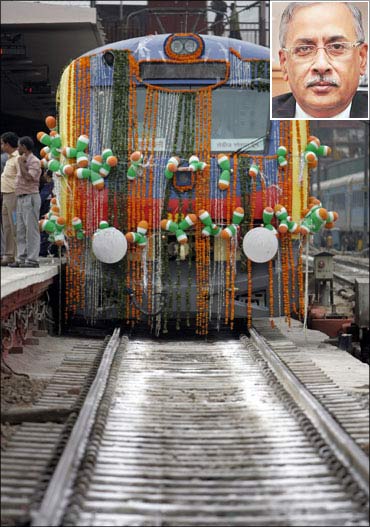

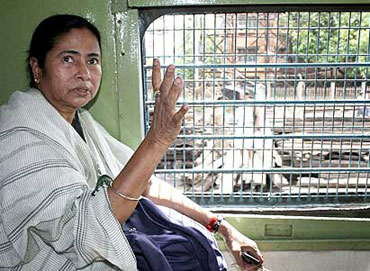
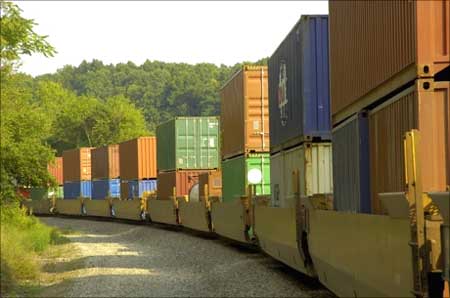
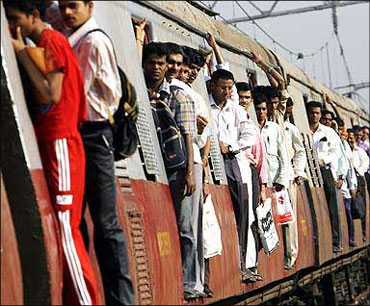
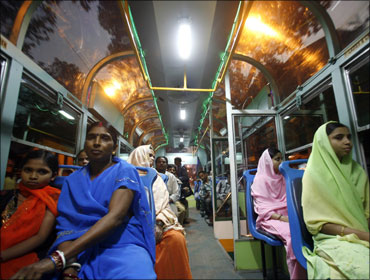
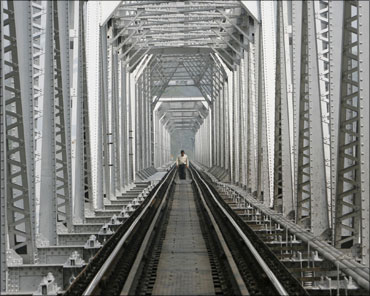
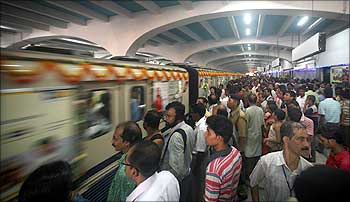
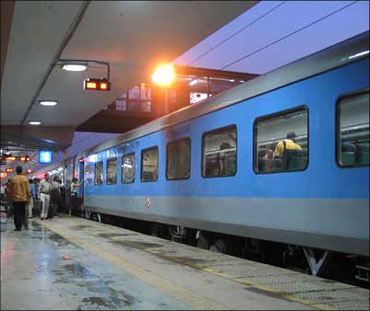
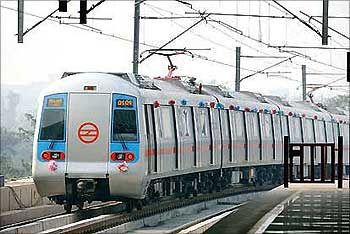


article